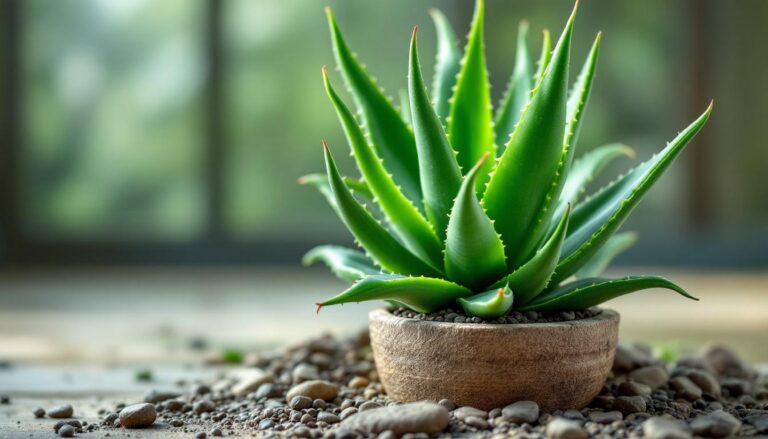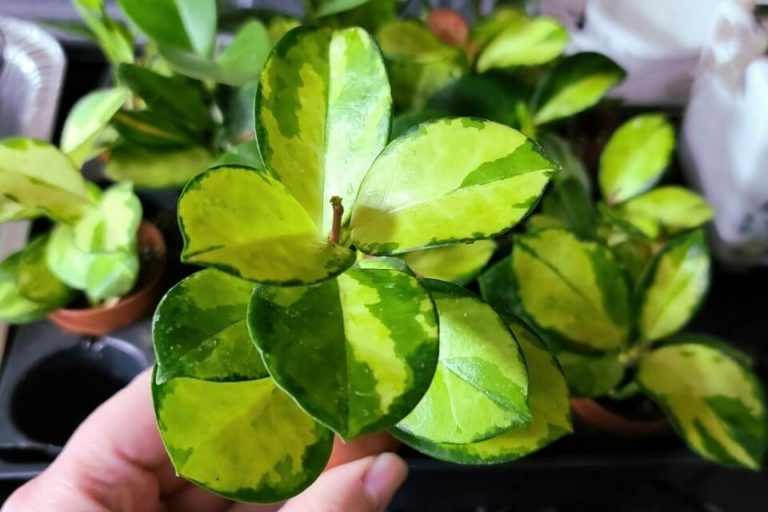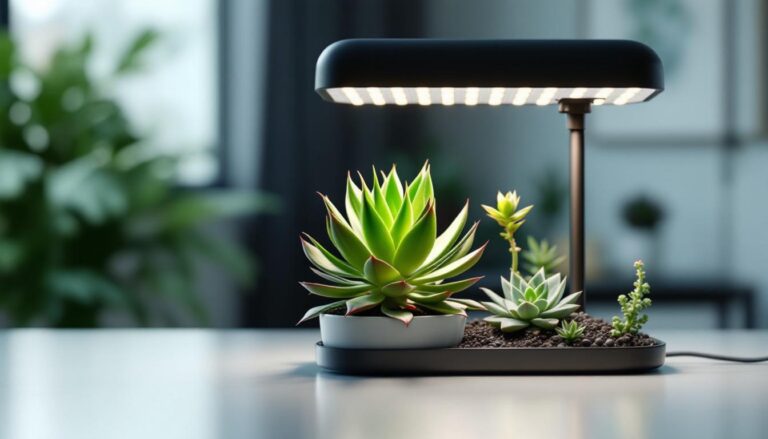String Of Bananas Care (Curio Radicans) – Growing, Propagation, & Care
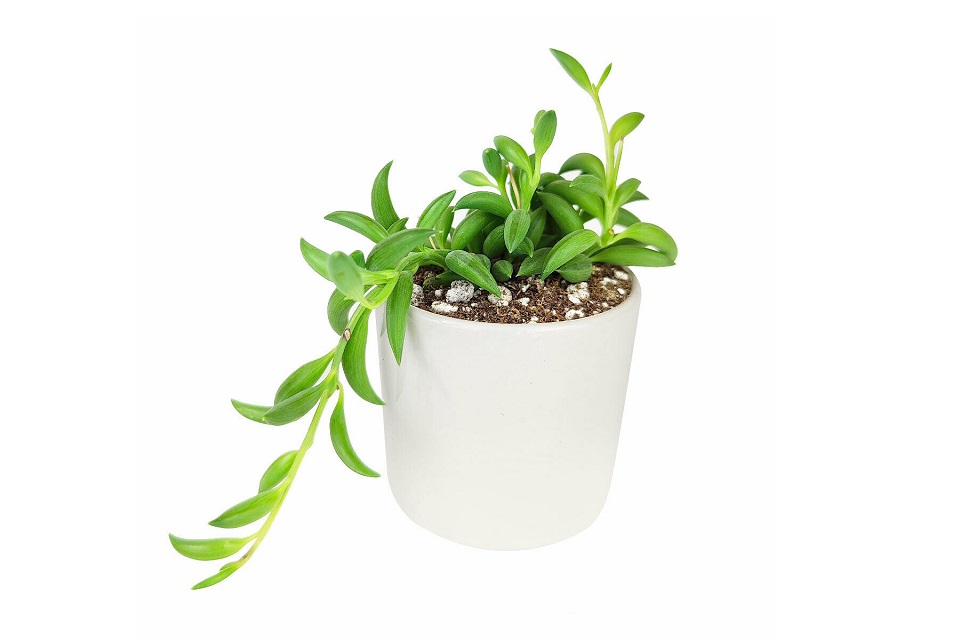
The String of Bananas plant is a popular succulent known for decorative plants. There are many variations of this succulent plant. However, all the varieties have similar requirements in terms of care and maintenance.
So, if you want to buy one or are in the process of growing one, this String of Bananas care guide is definitely for you as it highlights all you need to know about care and maintenance.
| Highlights: | |
|---|---|
| Common Names: | String of Bananas |
| Botanical Name: | Curio Radicans (syn. Senecio radicans) |
| Plant Family: | Asteraceae |
| Plant Type: | Succulent |
| Origin/Native: | South Africa |
| Care Level: | Easy to Medium |
| Grow Zone: | 10 - 12 (USDA Hardiness Zone) |
| Size: | Up to 36 inches long |
| Soil Requirement: | Light and well-draining soil with low pH levels |
| Water Requirement: | Medium moisture levels |
| Sun/Lighting: | Full sun (not direct), but require bright light |
| Temperature Req: | 40°F and 70°F (4°C to 21°C) |
| Propagation: | Stem cutting |
| Toxicity: | Toxic to pets or humans |
| Flowering/Color: | Yes/ Pink and white |
| Uses: | House plant for decorative purposes |
TABLE OF CONTENTS
What Is String Of Bananas (Curio Radicans)
This plant is a South African native succulent plant with banana-shaped leaves, so it’s called the String of Bananas. The plant is scientifically known as Curio Radicans (syn. Senecio radicans).
Bear in mind that it’s doesn’t fall under the classification of fruits. Also, when they bloom, they produce white flowers, and at times, the color may be bright pink. A mature String of Bananas measures 36 inches.
The tendrils of this plant usually grow in a hanging manner; that’s why they are grown in hanging pots. The plant may be resistant to dry conditions. But it is not frost-tolerant. So you have to maintain warmer conditions for Excellent growth.
String Of Bananas Size, Spread, And Appearance
The String of Bananas come in different sizes, which significantly impacts their appearance. For example, a 1 foot long vines of the plant have lesser spread than the 3- feet long vines. However, the leaves and stems are succulent with a green color appearance that can grow up to 36 inches long.
If you want to buy a String of Bananas, they are usually sold in 3, 4, and 6-inch pots. When grown on the ground, they spread extensively and generally longer than those grown in pots.
String Of Bananas Succulent Uses And Placements
The most popular use is for decoration purposes. You can place the plant on your study table or hang it in the living room near the window. Any place you consider fit for decoration must receive enough sunlight; otherwise, it will die.
String Of Bananas Care & Maintenance
When it comes to String of Bananas care, you must be aware of the basic need of the plant. The most important facts care about are the pot size, soil base, lights, and watering.
– Best Soil For String Of Bananas
The ideal soil for growing a String of Bananas should be succulent. The soil should also be light with a cactus mix (recommended) well drained and light. You can also use a chunky local mix and the cactus mix to ensure excellent drainage.
Consider buying a mix online if you can’t find any locally. Note the mix should be loose; otherwise, the succulent’s roots will rot. Advisably by adding some perlite, you would have lessened root rot chances by a significant percentage.
– Watering the Succulent
Watering the String of Bananas succulents is very different from watering other plants. Adopting the correct watering techniques is critical to the plant’s growth.
For example, as you water the plant, allow the top half of the potting mix to dry out first. However, be careful not to do that over an extended period, or the banana trails might eventually dry out.
Note that it’s not advisable to measure the amount of water for the plant’s watering. The main focus here is to moisten the potting mix thoroughly. Plus, you should know this isn’t considered overwatering.
In case you have troubles with thorough watering, it might be that other conditions such as sunlight, humidity, and temperature might not be optimal.
Though the plant may need thorough watering to moisten the potting mix, it doesn’t mean you can let the plant sit in water. If your spot excess water on the saucer, you should empty it immediately. Otherwise, the plant will develop root rot with time.
– Lighting and Exposure
Sunlight exposure is one of the most critical primary factors for the optimal growth of the String of Bananas. Ensure the amount of indoor lighting exposure ranges between medium to high. If the lighting is lower, it will compromise the plant’s growth.
Remember, low sunlight exposure for at least 6 hours will be good for this succulent variety. Direct sunlight exposure can burn the plant if it receives more than an hour.
Also, ensure the plant’s leaves aren’t touching the hot window pane. It’s advisable to rotate the plant every 3 to six months if it’s not receiving sunlight on all sides.
– Temperature Requirement
Though most succulents can do well under lower temperatures, optimal growth usually occurs under warmer temperatures. It would be best if you keep it in the temperature raging from 40°F and 70°F (4°C to 21°C).
As for the String of Bananas, temperatures below the freezing point (34 °F), it cannot tolerate and will be starting to dry out and die. Sun is one of the main factors that keeps it warm.
– Humidity Levels
Since indoor air is usually dry than outdoor air, average indoor humidity is ideal for growing your String of Bananas indoors. However, if your only water the plant only when it’s dry, then you shouldn’t stress yourself with humidity. But you must ensure the plant is in a sunny location.
Avoid watering the plant too often. That’s because it will cause humidity levels to rise above 50%, which might bring problems to the plant’s well-being. In addition, avoid putting the plant under damp conditions.
Otherwise, your risk interfering with the plant, and with time, the leaves may start falling off.
– Fertilizing String Of Bananas Plant
These plants don’t have any fertilizer requirements. If you’re looking for a way to keep them thriving, appropriate watering and more sunlight should suffice.
Alternatively, you can use fertilizer to improve the plant’s growth. However, you should use a water-soluble fertilizer with the correct dilute balance. Using NPK 3-1-2 contained fertilizer every 2 to 4 weeks would be a good practice of fertilizing this succulent.
Other common alternative growth boosters include; liquid kelp and fish emulsion. Generally, these plants are not heavy feeders, plus they don’t require growth supplements.
If you can maintain the proper watering techniques and plenty of sunlight, the plant will grow just fine.
– Is Pruning Required?
Pruning is required and has benefits such as controlling the growth rate of the plant’s stems. On the other hand, it can also help in more growth. Snipping the string halfway down causes multiple strands to grow.
– Potting And Re-Potting
When choosing the ideal pot and potting mix for your String of Bananas, one that drains out quickly is the best bet. However. When looking for a pot or when you decided to re-pot, they aren’t supposed to be;
- Deeper
- Too larger
Advisably, you shouldn’t rush to re-pot. And if you decide to re-pot, you go one size up. If your plant is 7 inches, an ideal pot size should be 9 inches. Note if you use a larger pot than the plant, the potting mix will take longer to dry out. Remember that sizing is also the general rule of thumb.
Reporting is best done after about 2 to 3 years. Also, as you transfer the plant from pot to pot, be careful not to break its fragile stems. To ensure a safe re-potting, first lay the trails on a flat surface. This should be done before removing the root from the pot.
After laying them on the flat surface, remove the roots carefully. Before transferring it to the newer pot, check for any signs of mushy roots and decay. Snip off any mushy root.
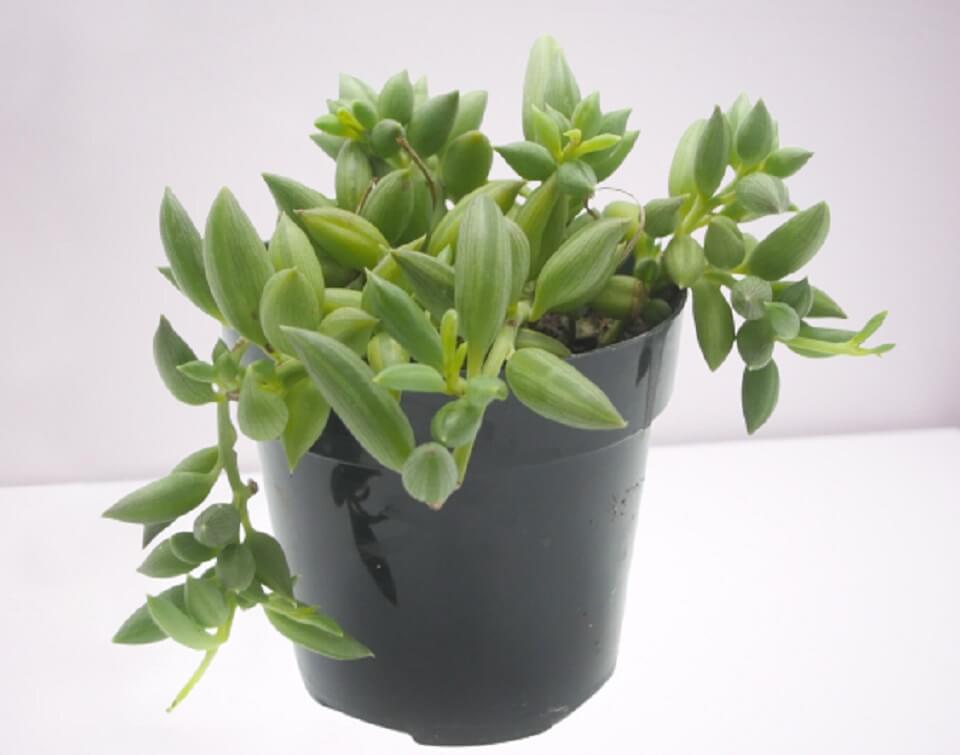
How To Propagate String Of Bananas?
Those familiar with this plant already know that caring and maintenance isn’t a walk in the park. For example, appropriate watering techniques are essential, or you risk drowning the plant.
However, propagation is an essential and easy maintenance routine. But, what are the requirements;
- Disinfectant
- Pot with fresh succulent soil or water
- String of bananas
- Scissors
Note propagation of this plant is easy and can be done by anyone. So how do you go about it;
Choosing propagation method:
There are two main propagation techniques, i.e., in the soil and in water. So before you start cutting anything, ensure to make a propagation technique choice that’s easy to execute. Also, before you begin any cuttings, ensure the scissors are disinfected thoroughly with water.
The cuttings:
Once you’ve disinfected the scissors, hold the stems you want to cut. Make sure the stems are at least 10cm long. You can take cuttings from multiple stems simultaneously. But it would be best if you also cut the stems long enough. At the top of the cuttings, leave at two bananas.
Placing the cuttings in a pot or the succulent soil:
At this point, the difference between soil propagation and water propagation becomes apparent. Using the water technique, have a container with water to hang the trail cuttings. If the bottom ‘bananas’ is touching the water, you should cut them off.
If you chose soil propagation, cut the bottom ”banana” then place then in the soil. Alternatively, you can place them on the soil. Ensure you make the cuttings on the bottom.
Root growth:
Most people usually have a problem with overwatering. At this stage, you have to ensure the plant isn’t overwatered. To do this successfully, ensure the soil dries up between the watering.
Remember that new roots will grow faster after water propagation than soil propagation. Expect to see enough roots in the cuttings’ regions after a month. Also, that would be the perfect time to do re-potting, i.e., water to soil transfer.
Common Diseases, And Problems
The String of Bananas is susceptible to pests and diseases and pests similar to most succulents. However, it’s hard to find pests such as aphids attacking this plant.
Though some pests can potentially cause disease and problems, the most common disease is root rot, mainly driven by waterlogging. To prevent this from happening, keep the plant in warm conditions and avoid overwatering.
Frequently Asked Questions
Where Should I Place My String Of Bananas Succulent?
As you already know, it’s advisable not to place the plant in direct sunlight. A sunny window Indoors is an ideal place.
If you choose to place it outdoors, ensure that after receiving morning sunlight, it’s protected from the harsh afternoon by providing it shade.
Can You Propagate String Of Bananas From Leaves?
There are three propagation techniques, but only two are the most popular. The techniques are;
- Water propagation
- Soil propagation
- Stick cutting in soil propagation
But some people claim to have propagated the plant through its leaves. However, you have to be extra careful and patient since the process takes relatively longer. If you don’t know how to do it, you should inquire from those who’ve done it before.
How Quickly Does String Of Bananas Grow?
Note that a String of Bananas grown outdoors at the required optimal conditions is likely to grow faster than those grown indoors. However, the ones growing in the wild – especially in a native environment – have a relatively high growth rate overall.
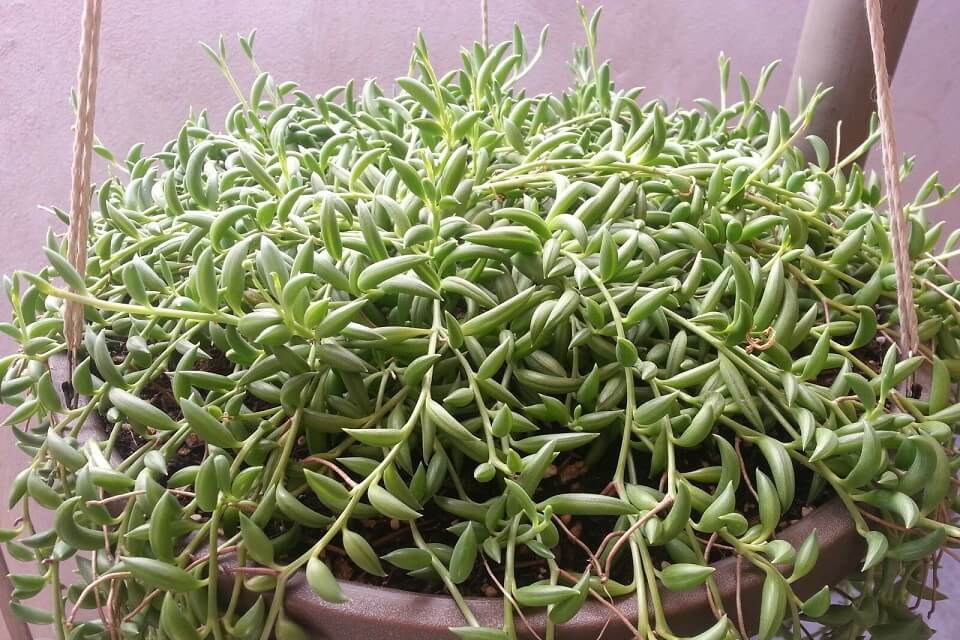
Why Is My String Of Bananas So Thin?
Curio Radicans is a String of Bananas variety that’s easy to revive and also difficult to kill. However, poor conditions associated with lighting, watering, and the soil may cause it to thin.
Also, it’s capable of quickly growing roots in plain water from the propagated cuttings. Conditions contributing to thining include;
Frequent watering
Like most drought-resistant plants, this one can also suffer significant root rot if constantly watered. That’s because excess water supply displaces root air setting causing root rot. Notable root rot symptoms include; Browning of the plant and yellowing of the roots.
Unfavorable temperature
If you’ve purchased a String of Bananas, you have to put it under gradual acclimatization so that it gets used to the new environmental temperatures. The new String of Bananas plants suffers heat stress which causes thinning.
Less watering
If a succulent plant isn’t getting enough water, it might cause problems such as root rot rapidly, which might eventually kill the plant.
However, the String of Bananas can withstand less watering over an extended period since it’s adapted to arid conditions. As much as watering involves letting the topsoil dry out, you should let it dry out excessively. Or it will thin out.
Low light exposure
During the night, succulents keep their stomata closed. However, during the is when they open them to absorb carbon dioxide. This is contrary to how most succulents photosynthesize.
Since it photosynthesizes like other typical plants, you must ensure it’s receiving enough light.
How Much Sun Does String Of Bananas Need?
As previously mentioned, sunlight is essential for this plant’s growth. Low sunlight exposure is recommended for at least 6 hours. Please be noted that it cannot tolerate direct sunlight for more than an hour.
To ensure the plant is getting medium and partial sunlight (the ideal amount), it should be near areas such as a window. And neither of its parts should be touching the window pane.
Note their stems, roots, and leaves are succulent. The high water content in these parts can easily cause the plant to burn on direct exposure to sunlight. You should provide as much indoor sunlight as possible.
Typically, the plant needs about 5 to 6 hours of sunlight exposure every day. For those in areas with unlimited sunlight, you’ll have to use an artificial sunlight supplement.
Is String Of Bananas the Same As Fish Hooks?
The Senecio Radicans is a botanical name shared by a String of Bananas and Fish Hooks. That way, it’s easy to confuse one for the other; in this case, fish hooks for a String of Bananas.
Though they may look similar, they bear distinct features like the fish hooks have succulent and thicker leaves. On the other hand, the String of Bananas has banana-like plump leaves with greener coloring.
Is String Of Bananas Toxic?
When ingested, the pant is mildly toxic to humans and pets. However, cats and dogs are more disadvantaged. The sap contains components that can cause dermatitis.
You should ensure the vines aren’t hanging so low and high enough out of children’s and pets’ reach. If you notice signs and symptoms such as;
- Skin irritation
- Vomiting
- Diarrhea
You should seek immediate medical attention as it’s highly likely they might have ingested this plant.
Do String Of Bananas Flower?
Yes, their flowers smell like cinnamon and look like white spoofs. The South African native plant blooms at the onset of spring when the bloom time sets in; expect some extra beauty from this plant.
Where Can I Buy String Of Bananas Succulent?
Many stores are selling the String of Bananas. You can use Google maps to find the nearest store vending the plant. Also, there are multiple online options to choose from, such as Amazon, Etsy, Walmart, etc.
Remember, the prices depend on two primary factors, the platform or the store and the size fitting your budget. For example, a 2-inch pot of String of Bananas may cost $5 and up depending on the size of the plant, while a 4-inch one costs around $12.0.
Takeaway
The String of Bananas are graceful and charming plants whose care and maintenance might seem intimidating, but it’s worth the effort. As mentioned in the article, they are readily available in most stores and even online.
So if you want one in your household, it’s a dial away. You have to stick to the care and maintenance routines suggested in the article. Otherwise, it will dry out and die.

